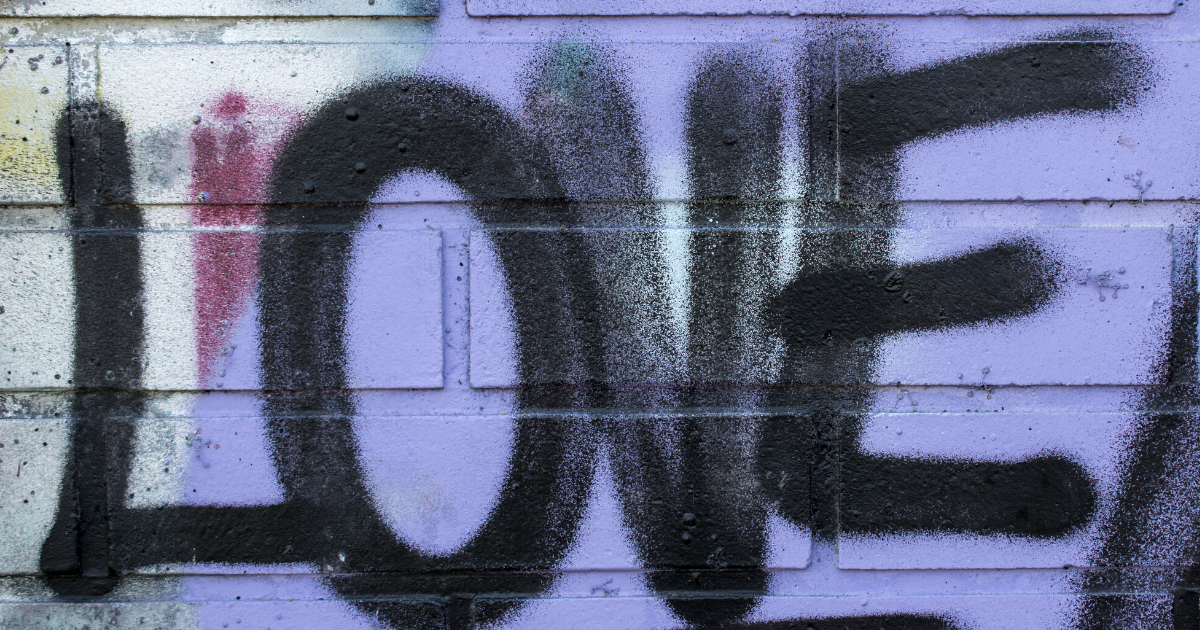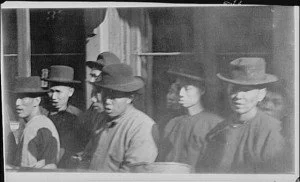The Radical Past and Present of Mutual Aid
You may have noticed a boom of new mutual aid societies forming to respond to crises in recent years. This trend began in 2020 during the COVID-19 pandemic, and continued through 2025 in response to the U.S. government shutdown and immigration crackdowns. These groups share housing, food, health care, goods, or transportation while drawing attention to the politics of inequity.
The idea is nothing new. Frequently-cited historical examples of mutual aid organizations include unions, 19th century Friendly Societies, medieval craft guilds, and pre-New Deal American fraternities that provided members health, life, and funeral benefits.
More notably, though, mutual aid has also been a mainstay in communities that have often been abandoned or marginalized by government institutions. For some of these groups, mutual aid means survival, especially in times when they are disproportionately impacted by disaster. This concept has a deep history in communities where language barriers or skepticism of government fuel a push toward self-sufficiency.
We’ve rounded up a few inspiring historical examples of mutual aid at work for marginalized communities.
African-American mutual aid
The inspiration for black mutual aid societies is often chalked up to the European Friendly Societies and fraternities, but others argue their roots can be traced to the West African concept of Sou-Sou: a cooperative arrangement that cares for sick members and serves as a bank. Banks modeled on Sou-Sou still exist, such as the Village Savings and Loan program in Ghana that serves rural communities.
By 1857, black mutual aid societies in the US—driven by the failure of white government to provide reciprocal value for their taxes—organized free black populations in cities across numerous states. Societies used membership dues to provide benefits for sickness and death, served as an employment network, and gave support for members’ widows and orphans.
By the 1960s, mutual aid had become a key component of social movements resisting capitalist and colonialist supremacy. This is most famously embodied by the Black Panther Party’s survival programs, which included:
A free ambulance program
Medical clinics
Drug and alcohol awareness programs
Errand rides for seniors
A socially-conscious school for youth
Free clothing and shoes
Legal aid education
Early childhood education programs (thought to be the first in the nation)
Most famously, by the end of the 1960s, the Black Panthers were serving high-quality, nutritious free breakfasts to 20,000 children in 19 cities every school day. Funding came largely from donations from within the community, such as stores, churches, and individuals. Organizers were careful to consult with nutritionists and get fully permitted by local health and fire agencies.
The breakfast program gave the Black Panthers a jumping-off point to amplify the unpopular topics of hunger and poverty. While the Panthers’ self-sufficiency drew resentment, scrutiny, and eventual crackdown by government authorities, it also partly inspired the U.S. Department of Agriculture’s School Breakfast Program which now feeds nearly 13 million students daily (and continues to be a vital source of nutrition in communities most impacted by COVID-19).
Some of the Panthers’ legacy was revived in 2020 by groups like NYC Shut It Down. Born from Black Lives Matter, Shut It Down played a huge role in the pandemic by expanding its street corner cookout program into a home-cooked meal delivery service for families experiencing food insecurity. They delivered thousands of meals across four boroughs with a mere team of 20-30 volunteers.
Latinx Mutual Aid
Sociedades mutualistas (mutual societies) for Latin Americans flourished in the Southwestern United States at the turn of the 20th century, serving as vehicles for community self-sufficiency and social support. Some societies still survive today, stressing their original values of Unity, Work, Protection, Education, Faith, and Brotherhood. These groups borrowed concepts from medieval guilds, 1900s friendly societies, rural cooperatives, and charitable lay brotherhoods of the Catholic Church.
Like their African American counterparts, duties of these societies historically included caring for the sick, making funeral arrangements, assisting widows and orphaned children, and settling disputes. During the colonial period, they formed local ditch associations to take charge of developing and maintaining irrigation waters essential to agricultural villages. Work tasks were performed collectively by all members (a practice which continued into the modern era).
In the 19th and 20th century, sociedades mutualistas filled a gap left by commercial life insurance companies which were disinterested in selling to minorities due to stereotypes and desire to maximize profits. (Companies refused to sell policies to Mexican Americans, for example, because it was believed that they all had tuberculosis).
The sociedades also played a prominent role in labor and civil rights issues. In its first decade, one of the most successful of these organizations—The Alianza Hispano-Americana—successfully negotiated concessions for higher wages on behalf of 1,200 to 1,500 striking mine workers in Arizona. By the early 1920s, Alianza chapters provided legal assistance through a defense fund to victims of injustice based on their national origin or economic status. Alianza fought to change legal procedures on behalf of the poor, and offered its lawyers whenever possible to any Mexican American without proper representation.
By the 1950s, Alianza was running numerous civil rights programs relating to desegregation, criminal justice, citizenship, and immigration.
A decade or so later, burgeoning human rights leader Jose Cha Cha Jimenez would be inspired by these sociedades (as well as the Black Panthers and student movements in Puerto Rico) to reform Chicago street gang The Young Lords into one of the most influential and radical mutual aid movements in modern history.
The Young Lords created community projects similar to those of the Black Panthers including free breakfasts, health and dental clinics, clothing drives, Puerto Rican history classes, and testing for tuberculosis and lead poisoning. They also worked in solidarity for incarcerated Puerto Ricans and the rights of Vietnam veterans.
The Young Lords carried out many direct-action occupations of vacant land, hospitals, churches and other institutions to demand programs for the poor. Most famously, they are known for their 1970 occupation of the Lincoln Hospital in New York City.
Early morning July 15th that year, about 100 young people belonging to a patient-worker group (the Think Lincoln Committee) entered through the windows and doors of Lincoln Hospital to uplift it from neglect by the city government. Welcomed by patients (and finding no resistance from staff), the Young Lords ran health programs in an unused hospital building. They performed lead poisoning screenings and founded a day care center that would later be put to official service.
Eventually, the police surrounded the hospital and the Young Lords left peacefully, but the offensive exposed the depressing conditions seen in inner-city hospitals—so well, in fact, that then-Mayor John Lindsay conceded to construct a new hospital.
Chinese American Mutual Aid
Immigrant mutual aid organizations have played an important role in helping immigrants find their footing in the U.S. by offering financial assistance to low-wage families and a sense of home through social activities.
Immigrants from the same lineage or region of China formed mutual aid associations, which offered resources the U.S. denied them at the time. One such resource was medicine.
During the numerous epidemics of the late 19th and early 20th centuries, local health officials in San Francisco often scapegoated the Chinatown community for epidemics, blaming cultural vices, living conditions, and Chinese sex workers for some of the worst outbreaks of the time. Meanwhile, rampant discrimination prevented Chinese immigrants from receiving treatment.
This scapegoating was later revived by politicians who sought to blame the COVID-19 crisis on Chinese people.
In 1900, Chinese merchants connected to mutual aid associations responded by starting the Tung Wah Dispensary—the first Chinese-American hospital in the continental U.S. Originally offering traditional Chinese medicine (with mixed results), it later evolved into the Bay Area’s Chinese Hospital— an institution vital to coordinating one of the most successful regional responses to COVID-19.
Today, benevolent organizations in Chinese communities represent a tie to the political, entrepreneurial, and social history of Chinatowns and the Chinese American communities at large.
Modern mutual aid groups
For further inspiration and education, we've rounded up some examples of mutual aid groups started recently, with emphasis on minority communities. (Note: these pages are linked for educational and example purposes only. These organizations have not been vetted by the writers of this article.)
805 UndocuFund (Latinx)
Bluff Area Mutual Aid (Navajo and Ute)
CIELO: Comunidades Indígenas en liderazgo (Indigenous)
Community Loving (Los Angeles)
Cooperation Jackson (Black, Mississippi)
Fireweed Collective (disability)
Intergalactic Childcare Collective (national directory)
Kinlani (Navajo)
La Colectiva (Latinx mutual aid)
Liberated Capital (Indigenous)
Mutual Aid LA Network (Los Angeles)
Navajo and Hopi Solidarity Fund (Navajo and Hopi)
Neighborhood Fridge (Florida)
No More Deaths (Arizona Latinx immigrants)
Northern Dine Relief Team (Dine)
Palms Unhoused Mutual Aid (PUMA) (Los Angeles)
People4People LA (Los Angeles)
Power to the People: 50+ Grassroots Activists Step Up During the COVID-19 Crisis (Colorlines.com)
SGV Mutual Aid Society (Los Angeles)
Standing Against Foreclosure and Eviction (tenants rights, Seattle)
Tampa Period Pantry (menstrual products)
The Okra Project (Black trans)
Ujimaa Medics (Black health care)
Further reading:
Antifa and leftists organize mutual aid and rescue networks in Houston (Salon.com)
From mutual aid to dual power in the state of emergency (Roar Magazine)
How LA is uniting to provide mutual aid for those impacted by ICE raids (Waging Nonviolence)
How to build mutual aid that will last after the Coronavirus pandemic (American: The Jesuit Review)
Mutual Aid Movement Playing a Huge Role in COVID-19 Crisis (City Limits Magazine)
Palestine, Haiti, and the Politics of Aid: “Disaster Relief” vs Sustainability and Self-Determination (leftturn.org)
The Trans Buddy Program is Transforming Healthcare (Point Foundation)
What Happens When Government Stops Helping? (50501 Movement)
Atheists United offers community-building programs where members can meet to organize mutual aid programs of their own. We also hold a food distribution monthly in partnership with LA Food Bank. Your donation helps fund these programs.
This article originally published by Foundation Beyond Belief, reprinted with permission of its original author.




